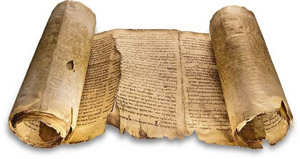
Qumran: New Light on the New Testament
The most important archaeological find of the 20th Century

The most important archaeological find of the 20th Century
The Dead Sea Scrolls have revolutionized New Testament studies
A little over sixty years ago, a young Bedouin shepherd threw a stone into a hillside cave near Wâdi Qumran and heard, so the story goes, the unmistakable sound of pottery shattering. Upon checking out the source of the noise, he stumbled on what is probably the find of the century: fragments of scrolls that were obviously very old. By 1956, ten more caves were discovered, yielding archeological treasures unimagined just a few years before.
Why are these scrolls and fragments so important? The literature found in those hillside caves is significant for several reasons. First, they tell the story of an unknown group—probably Essenes --who lived in the region during one of the most pivotal points in the history of western civilization: the first centuries BC and AD (also referred to in scholarly journals as B.C.E. and C.E). From their writings we get insights into the formation of modern Judaism and primitive Christianity. Second, every book of the Old Testament was represented in those caves except the Book of Esther. By putting the fragments together and translating what remains, we have witnesses to the text of the Old Testament that are about 1000 years earlier than any previous existing witness.
Finally, the biblical texts available from the find confirm the LXX (the Greek version of the Old Testament often quoted by the New Testament writers) as a fairly accurate translation (not a paraphrase) from a Hebrew text that was available at the time of Jesus (in contrast to the Masoretic text deemed official by the Rabbis following the Jewish War of 66-70 AD.).